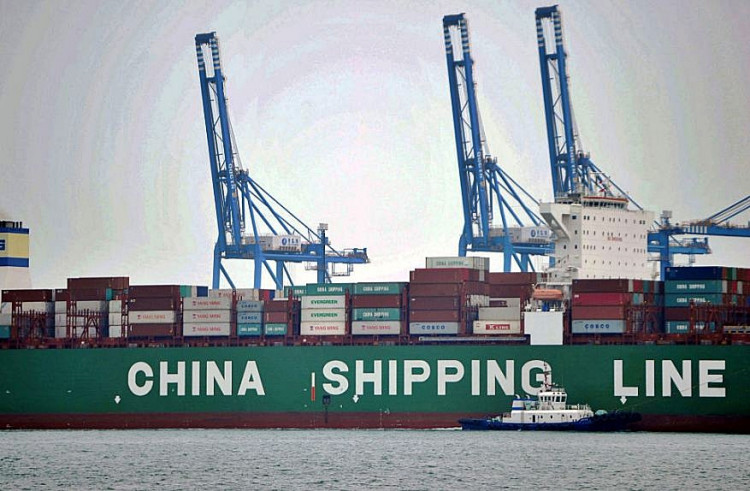Trump's trade war with the world comes at a cost, even for the country that launched it, and for the United States that cost amounted to $7.8 billion in lost GDP for 2018.
A study by a team of economists at leading U.S. universities published over the weekend analyzed the short-run impact of Trump's trade war. It found imports from countries hit by Trump's tariffs plummeted 31.5 percent while U.S. exports hit by punitive tariffs from other countries fell by 11 percent.
The study also found that annual consumer and producer losses from higher costs of imports came to a total of $68.8 billion.
"After accounting for higher tariff revenue and gains to domestic producers from higher prices, the aggregate welfare loss was $7.8 billion," or 0.04 percent of GDP, according to the study.
It's been a year since Trump, who crowned himself the "tariff man," facetiously boasted "Trade wars are good and easy to win."
Trump's trade war also hurt businesses located in the Red States or states leaning Republican said the study more than they did in the Blue States or Democrat states.
"We find that tradeable-sector workers in heavily Republican counties were the most negatively affected by the trade war," said the study.
The study was authored by a team of economists at the University of California Berkeley, Columbia University, Yale University and the University of California at Los Angeles (UCLA) and published by the National Bureau of Economic Research.
This study supports the conclusions of two studies released earlier this month. A study published March 3 put the annual losses from the higher cost of imports alone for the U.S. economy at $68.8 billion, or almost 0.4 percent of GDP. It was conducted by four economists, including Pinelopi Goldberg, the World Bank's chief economist and former editor-in-chief of the prestigious American Economic Review
This $68.8 billion was offset by the gains from protectionism derived by U.S. producers benefiting from the tariffs, said the study. The study found the aggregate annual loss for the U.S. economy fell to $6.4 billion, or 0.03 percent of GDP, after accounting for the impact of higher tariff revenue and the benefits of higher prices to domestic producers.
In another paper, some of the world's leading trade economists declared Trump's tariffs to be the most consequential trade experiment seen since the 1930 Smoot-Hawley tariffs that triggered the Great Depression.
They also found the initial cost of Trump's duties to the U.S. economy was in the billions and is being borne mostly by American consumers.
In a study published March 2, economists from the Federal Reserve Bank of New York, Princeton University and Columbia University found that tariffs imposed in 2018 by Trump were costing U.S. companies and consumers $3 billion a month in additional tax costs. Trump's tariffs also cost companies a further $1.4 billion in deadweight losses.
They also were causing the diversion of $165 billion a year in trade leading to significant costs for companies having to reorganize supply chains.
This study by Mary Amiti, Stephen Redding and David Weinstein said almost all of the cost of the tariffs was being paid by U.S. consumers and companies. That contradicts Trump's claim that China is paying the tariffs.
"This is kind of the worst-case scenario in terms of consumers,'' said Weinstein. "It's pretty unclear that this trade war is a net win for the economy at this point,''
Weinstein said data hasn't captured all of the costs to the U.S. economy. The three economists are now working on quantifying the amount of investment put on hold by Trump's trade war, said Weinstein.






